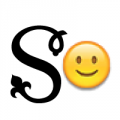Which extended Latin characters never occur at the beginning of a word?
Options
Comments
-
While a decorative typeface, intended for drop caps, could indeed exclude a lot of linguistic edge cases and still be useful, this is certainly an informative thread. I suppose it should not be surprising that whatever is out there, someone will find a use for - as in the Marshallese case, although, there, it's more important to include M̧ than Ṃ... but there's always the possibility that there's yet another language which this thread has missed.
0 -
I think this is somewhat relevant: https://matadornetwork.com/abroad/the-ultimate-guide-to-computer-keyboards-around-the-world/1
-
Nah, «z» would have been read as [ts] by the target audience.Hrant H. Papazian said:It sounds like «ß» and «z» would've been better.
0 -
I think there is value in offering a minority language access to the diverse typographical palette we take for granted – hence I don’t necessarily consider display fonts a ripe opportunity for smaller character sets. However, I also don’t think it is practical for any one type designer to do this for *all* minority languages. But you could support your own local minorities.1
-
Glad to hear the «ß» is safe.Christian Thalmann said:
Nah, «z» would have been read as [ts] by the target audience.
So how to indicate the "z" sound?
If most of your customers are local, otherwise it's just feelgood. Maybe the best way is to do such extensions for free when somebody asks (and make sure people know that).Frode said:
But you could support your own local minorities.0 -
AFAIK there’s no Polish word that starts with Ą. I though it’s the same for Ę, but apparently there’s ęsi.0
-
Of course, Ą does not only occur in Polish.2
-
Vowels with ogonek: Frode is right. In Lithuanian, a vowel with ogonek appears at the beginning of several words, like ąsa (eye). This diacritic is also used in North American languages.
M with cedilla: Eric Muller, from Adobe, published a short article in 2013 saying that l, m, n, and o in Marshallese should receive cedilla and not comma below.0 -
What a pity that they’re not hard-coded. And there are graphic detail issues, especially with n and M where not (always) a part of the glyph is reaching down to the baseline in the middle, to accomodate the attachment of the cedilla. Or is it customary in Marshallese to have it hanging around ‘in the air’?Igor Freiberger said:… that l, m, n, and o in Marshallese should receive cedilla and not comma below.
0 -




Localizations are relatively solid in web browsers – less so (ranging from cumbersome to impossible) in various DTP software, but can you really expect users to activate such advanced features?
3 -
Even though it is more common between other letters, you can find initial Ñ in a few Spanish words.Vasil Stanev said:Maybe the same is true about Ñ?
(image taken from a pocket dictionary)
3 -
Lithuanian doesn't have words that start with Ę or Ų. Don't know about Polish though.
@Frode What font is that at the bottom?
0 -
@Eimantas Paškonis Just one of mine, as an example of a possible visual solution for non-connecting and connecting cedilla working in harmony.0
-
Continuing the thread of supporting your own (local) minorities, US designers might want to put in a little extra for the Marshallese people, seeing as your nation nuclear tested their nation back to the stone ages.1
-
I like the picture of the Marshallese library. I don't recall ever being in a library where there's a sign to remind you how alphabetical order works 😁0
-
As far as I understood from "The Elements of Typographic Style", the ogonek under the Native Indian letters resides/floats in the middle under the letter.
I have seen an O with an ogonek in texts about Proto-Slavic.
1 -
This is my first lines here, so please allow me to say a word first: Hello!

“Ğ” (Gbreve and/or gbreve) is never be the first letter of any word in Turkish. All other Turkish specific accented characters have to be available to be used as a first letter (i.e. Çç, İı, Öö, Şş, Üü, and very rare but still valid for the context: Ââ).2 -
Confirming, ą and ę do not start ordinary words in Polish. Ęsi is not a real word and was already removed from the scrabble dictionary sjp.pl. However, you can still argue the existence of the adjective ę-ą, or ą-ę meaning ‘pretentious’. Pretty marginal, though.Additionally, ń does not start any words. Ć Ł Ó Ś Ź Ż all can start ordinary words, although few.Btw, I made an app a while ago that might help resolve the problem stated in this thread. However it uses data compiled from the English Wiktionary, so the completeness of entries depends on the language. But if you can trust Wiktionary, there are some 39 Lithuanian words starting with į and three with ą.0
Categories
- All Categories
- 46 Introductions
- 3.8K Typeface Design
- 476 Type Design Critiques
- 555 Type Design Software
- 1.1K Type Design Technique & Theory
- 640 Type Business
- 831 Font Technology
- 29 Punchcutting
- 508 Typography
- 120 Type Education
- 313 Type History
- 75 Type Resources
- 109 Lettering and Calligraphy
- 30 Lettering Critiques
- 79 Lettering Technique & Theory
- 533 Announcements
- 86 Events
- 110 Job Postings
- 167 Type Releases
- 169 Miscellaneous News
- 274 About TypeDrawers
- 53 TypeDrawers Announcements
- 119 Suggestions and Bug Reports









